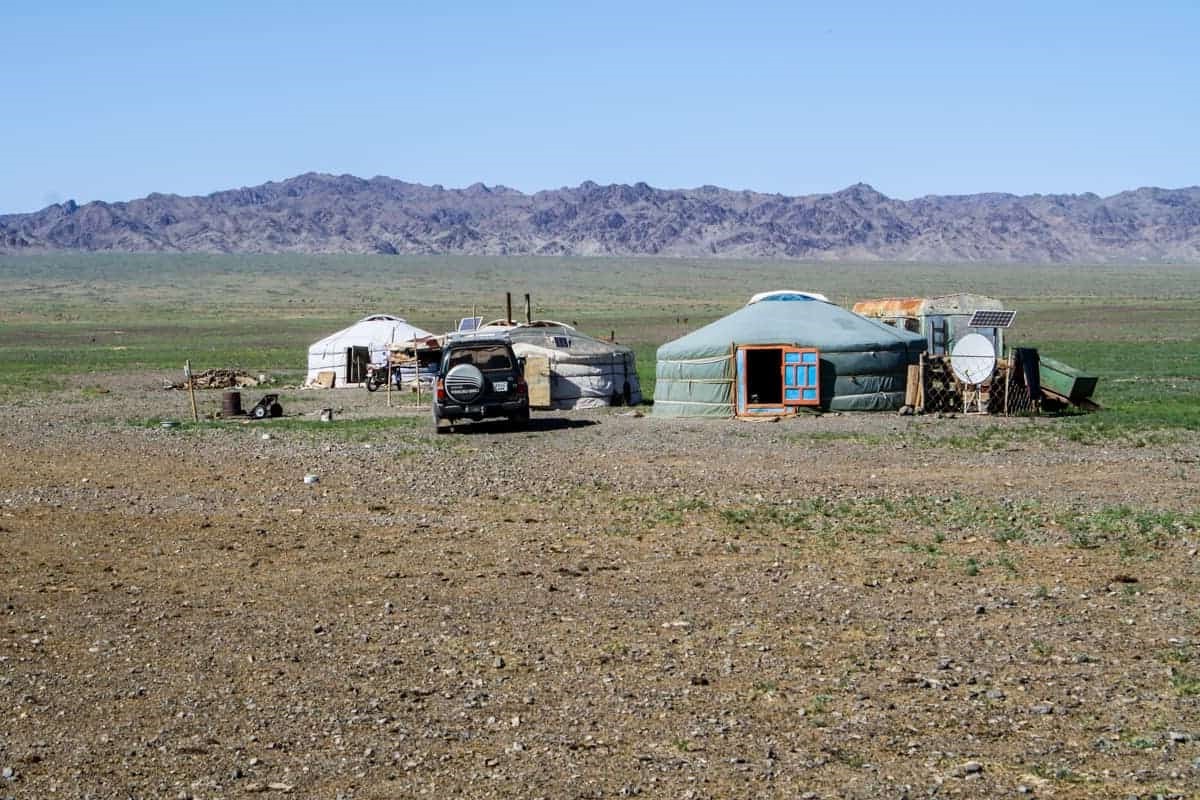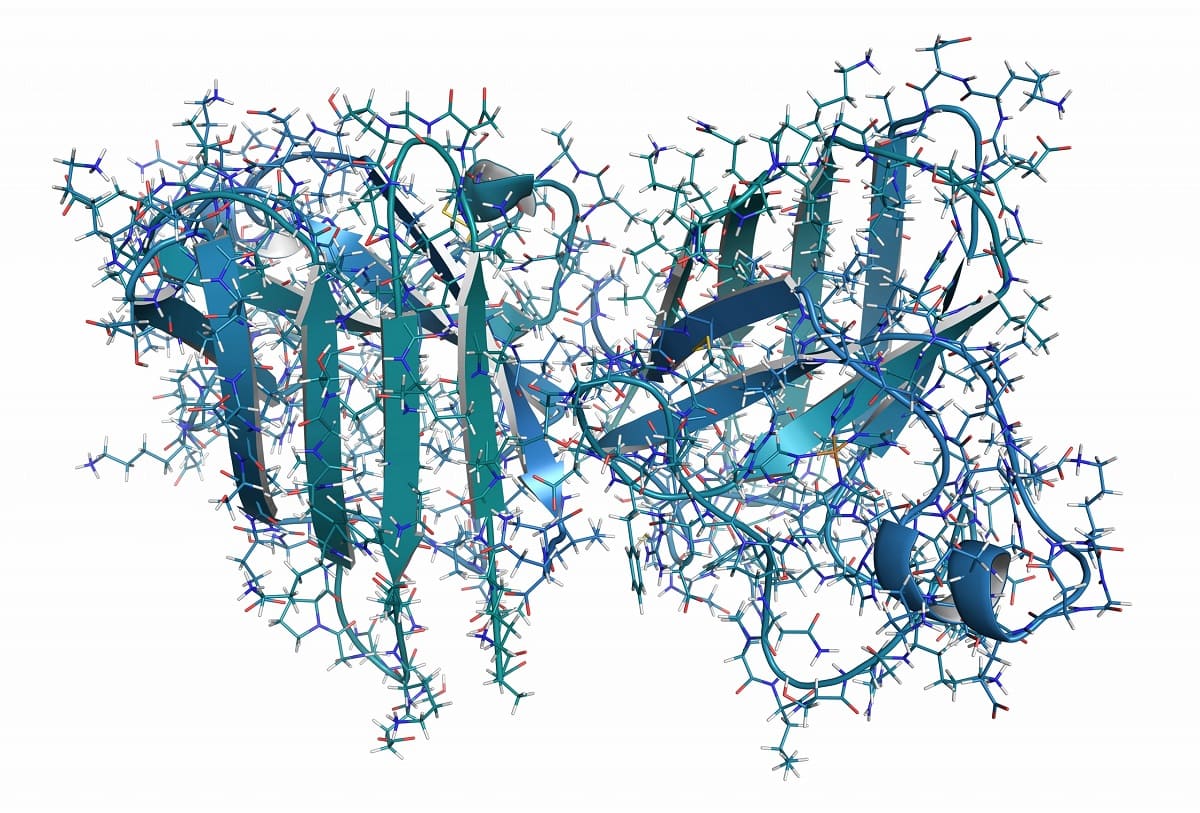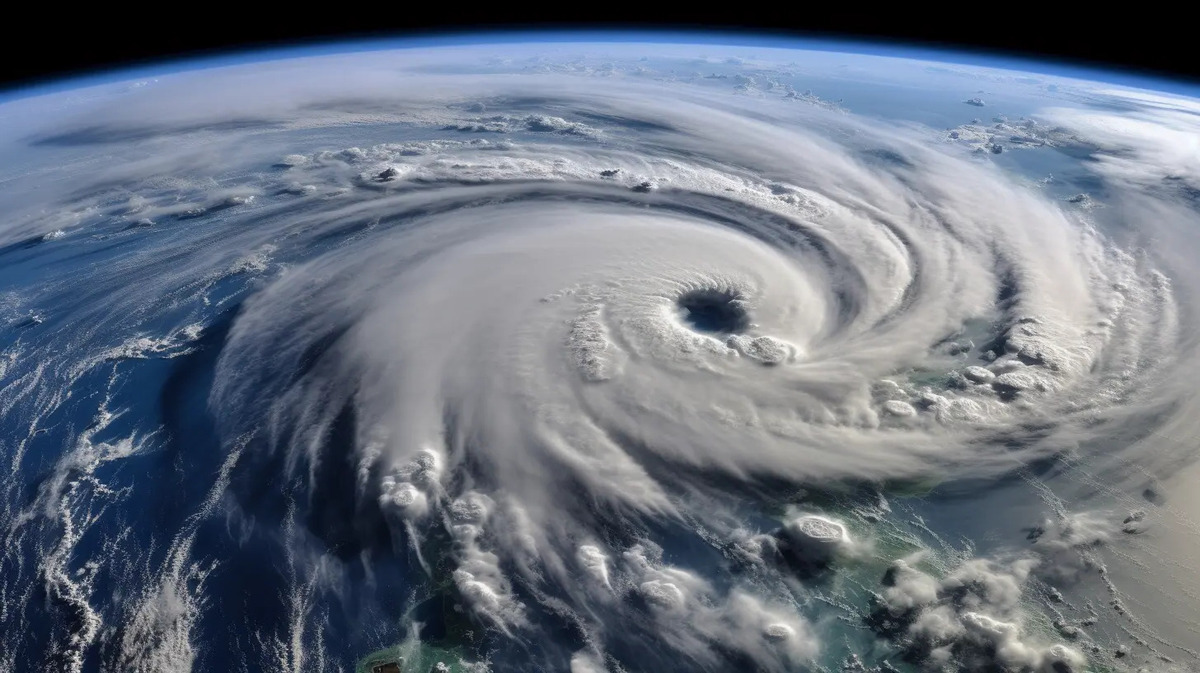Home>Weather and Climate>The Pressure Zone Linked To High Rainfall And Tropical Climate


Weather and Climate
The Pressure Zone Linked To High Rainfall And Tropical Climate
Published: March 6, 2024
Discover the impact of weather and climate on the pressure zone associated with high rainfall and tropical conditions. Explore the connection between atmospheric pressure and these environmental factors.
(Many of the links in this article redirect to a specific reviewed product. Your purchase of these products through affiliate links helps to generate commission for Temperatures.com, at no extra cost. Learn more)
Table of Contents
Introduction
The pressure zone, a fundamental component of Earth's atmospheric dynamics, plays a pivotal role in shaping weather patterns and climate conditions across the globe. This atmospheric phenomenon exerts a profound influence on the distribution of rainfall, particularly in tropical regions, where high precipitation levels are a defining characteristic. Understanding the intricate interplay between pressure zones and rainfall is essential for comprehending the complexities of tropical climates and their broader implications.
The pressure zone, often referred to as the Intertropical Convergence Zone (ITCZ), is a belt of low pressure encircling the Earth near the equator. This region serves as a convergence point for trade winds originating from the Northern and Southern Hemispheres, resulting in the ascent of warm, moisture-laden air. As this air mass rises, it cools, leading to condensation and the formation of cumulonimbus clouds, which are responsible for the copious rainfall experienced in tropical areas.
The significance of the pressure zone in driving high rainfall levels cannot be overstated. The convergence of trade winds and the subsequent uplift of warm air create a conducive environment for the development of thunderstorms and heavy precipitation. This phenomenon is particularly pronounced in tropical climates, where the combination of abundant warmth and moisture sets the stage for intense convective activity, giving rise to the lush, verdant landscapes characteristic of these regions.
Moreover, the relationship between the pressure zone and high rainfall extends beyond mere meteorological processes. The resulting abundance of precipitation sustains the rich biodiversity of tropical ecosystems, nurturing diverse flora and fauna. Additionally, the agricultural productivity of tropical regions is intricately linked to the reliable rainfall patterns facilitated by the pressure zone, supporting vital crops such as rice, bananas, and coffee.
As we delve deeper into the intricacies of the pressure zone and its association with high rainfall, it becomes evident that this atmospheric phenomenon is a linchpin of tropical climates, shaping the natural environment and influencing human activities in profound ways. By unraveling the mechanisms underlying the pressure zone and its impact on rainfall, we gain valuable insights into the dynamic interplay between atmospheric dynamics and the ecological fabric of tropical regions.
Read more: How to Understand Zone 8 Temperature Range
Understanding the Pressure Zone
The pressure zone, also known as the Intertropical Convergence Zone (ITCZ), is a pivotal atmospheric feature that exerts a profound influence on global weather patterns, particularly in tropical regions. Positioned near the equator, this belt of low pressure serves as a convergence point for the trade winds originating from the Northern and Southern Hemispheres. As these trade winds meet, they ascend, creating a zone of uplift characterized by warm, moisture-laden air. This ascent of air leads to the formation of cumulonimbus clouds, which are responsible for the copious rainfall experienced in tropical areas.
The ITCZ is a dynamic entity, exhibiting seasonal variability in response to the migration of the Sun. During the Northern Hemisphere summer, the ITCZ shifts northward, reaching its most northerly position in July, while during the Southern Hemisphere summer, it moves southward. This migration is driven by the differential heating of land and sea, which causes the air to rise and converge along the equator, forming the characteristic low-pressure belt.
The behavior of the ITCZ is also influenced by the Earth's axial tilt, which gives rise to the seasonal variation in the angle of solar radiation. This tilt results in the migration of the ITCZ between the Tropics of Cancer and Capricorn, following the zone of maximum insolation. Consequently, the ITCZ plays a pivotal role in redistributing heat across the Earth's surface, contributing to the regulation of global climate patterns.
Furthermore, the ITCZ is not a static feature but rather a dynamic boundary that responds to complex interactions between oceanic and atmospheric processes. The presence of warmer sea surface temperatures can intensify the ITCZ, leading to increased convective activity and higher rainfall levels. Conversely, cooler sea surface temperatures may weaken the ITCZ, resulting in reduced precipitation in affected regions.
In essence, the pressure zone, or ITCZ, represents a critical nexus of atmospheric dynamics, where the convergence of trade winds and the uplift of warm, moist air give rise to the distinctive weather patterns observed in tropical climates. By unraveling the complexities of the pressure zone, we gain a deeper appreciation for its pivotal role in shaping global weather systems and the intricate interplay between atmospheric processes and the natural environment.
Impact of High Rainfall on Tropical Climate
The impact of high rainfall on tropical climates is profound and multifaceted, exerting far-reaching effects on the ecological, social, and economic dimensions of these regions. The copious precipitation facilitated by the pressure zone plays a pivotal role in shaping the unique characteristics of tropical climates, contributing to the lush biodiversity and agricultural productivity that define these areas.
In tropical ecosystems, high rainfall levels sustain a rich tapestry of flora and fauna, fostering diverse and vibrant habitats. The abundance of moisture supports the growth of dense rainforests, teeming with an unparalleled array of plant species, from towering canopy trees to intricate understory vegetation. This luxuriant vegetation, in turn, provides a habitat for an extraordinary diversity of wildlife, including colorful birds, elusive mammals, and a myriad of insect species. The interplay between high rainfall and tropical ecosystems engenders a delicate balance, nurturing the intricate web of life that thrives in these verdant landscapes.
Moreover, the impact of high rainfall extends beyond the realms of ecology, permeating into the fabric of human societies in tropical regions. The reliable and abundant precipitation facilitated by the pressure zone sustains vital agricultural activities, underpinning the livelihoods of communities reliant on farming. Crops such as rice, bananas, sugarcane, and coffee, which are emblematic of tropical agriculture, flourish in response to the consistent rainfall, providing sustenance and economic prosperity for local populations. The agricultural bounty engendered by high rainfall levels not only supports food security but also forms the bedrock of tropical economies, driving trade and commerce on both local and global scales.
Furthermore, the impact of high rainfall on tropical climates extends to the regulation of water resources and hydrological cycles. The abundant precipitation replenishes rivers, streams, and groundwater reservoirs, ensuring a continuous supply of freshwater for both human consumption and ecosystem sustenance. This intricate balance of water availability, sustained by high rainfall, is essential for the perpetuation of life in tropical regions, underpinning the resilience of communities and the vitality of natural ecosystems.
In essence, the impact of high rainfall on tropical climates is far-reaching and transformative, shaping the ecological, agricultural, and hydrological dynamics of these regions. By delving into the intricate interplay between the pressure zone and high rainfall, we gain a deeper understanding of the pivotal role played by atmospheric processes in sculpting the natural environment and sustaining the intricate web of life in tropical ecosystems.
Factors Influencing the Pressure Zone
The Intertropical Convergence Zone (ITCZ), commonly known as the pressure zone, is influenced by a myriad of factors that contribute to its dynamic behavior and seasonal variability. These factors play a pivotal role in shaping the characteristics of the pressure zone and its associated weather patterns, exerting a profound impact on global climate dynamics. Understanding the key influencers of the pressure zone is essential for unraveling the complexities of atmospheric processes and their far-reaching implications.
-
Solar Insolation: The distribution of solar radiation across the Earth's surface is a primary driver of the pressure zone. The differential heating of the atmosphere and the Earth's surface due to varying angles of solar insolation leads to the formation and migration of the ITCZ. As the Sun's rays strike the equatorial regions more directly, the resulting heating of the air masses triggers the ascent of warm, moisture-laden air, culminating in the establishment of the low-pressure belt characteristic of the pressure zone.
-
Sea Surface Temperatures: The temperature of oceanic surfaces exerts a significant influence on the behavior of the pressure zone. Warmer sea surface temperatures contribute to the intensification of the ITCZ, fostering increased convective activity and higher precipitation levels. Conversely, cooler sea surface temperatures can weaken the pressure zone, leading to reduced rainfall in affected regions. The intricate interplay between sea surface temperatures and the pressure zone underscores the profound impact of oceanic processes on atmospheric dynamics.
-
Earth's Axial Tilt: The Earth's axial tilt plays a pivotal role in driving the seasonal migration of the pressure zone. As the angle of solar radiation varies throughout the year due to the Earth's axial tilt, the ITCZ shifts between the Tropics of Cancer and Capricorn, following the zone of maximum insolation. This seasonal migration results in the characteristic shifts in weather patterns and precipitation levels observed in tropical regions, reflecting the influence of the Earth's axial tilt on the behavior of the pressure zone.
-
Atmospheric Circulation Patterns: The complex interplay between atmospheric circulation patterns, including the Hadley, Ferrel, and Polar cells, influences the behavior of the pressure zone. The convergence of trade winds and the ascent of warm air within the ITCZ are intricately linked to the broader atmospheric circulation patterns that govern global wind systems. The interaction between these circulation patterns and the pressure zone shapes the distribution of rainfall and weather phenomena across tropical regions, underscoring the interconnected nature of atmospheric processes.
In essence, the pressure zone is subject to a diverse array of influences, ranging from solar insolation and sea surface temperatures to the Earth's axial tilt and atmospheric circulation patterns. By unraveling the multifaceted factors that shape the behavior of the pressure zone, we gain valuable insights into the intricate mechanisms governing atmospheric dynamics and the broader implications for global climate patterns.
Consequences of the Pressure Zone on Weather Patterns
The Intertropical Convergence Zone (ITCZ), commonly referred to as the pressure zone, exerts profound consequences on weather patterns, shaping the climatic dynamics of tropical regions and beyond. The behavior of the pressure zone gives rise to a myriad of weather phenomena and atmospheric processes, engendering far-reaching impacts on global weather systems. Understanding the consequences of the pressure zone on weather patterns is essential for unraveling the intricate interplay between atmospheric dynamics and the natural environment.
One of the primary consequences of the pressure zone is the generation of intense convective activity and copious rainfall. As the trade winds converge and uplift warm, moisture-laden air within the ITCZ, the resulting ascent leads to the formation of towering cumulonimbus clouds and thunderstorms. These convective processes give rise to heavy precipitation, contributing to the high rainfall levels characteristic of tropical climates. The abundance of rainfall sustained by the pressure zone plays a pivotal role in nurturing lush ecosystems, supporting diverse flora and fauna, and sustaining vital agricultural activities.
Moreover, the pressure zone influences the distribution of rainfall across tropical regions, shaping the spatial and temporal patterns of precipitation. The migration of the ITCZ in response to seasonal variations in solar insolation and the Earth's axial tilt leads to distinct wet and dry seasons in tropical areas. This seasonal variability in rainfall patterns, driven by the behavior of the pressure zone, has profound implications for agricultural practices, water resource management, and ecological dynamics in tropical ecosystems.
The consequences of the pressure zone extend beyond the confines of tropical regions, influencing broader weather patterns and climate dynamics. The convective processes facilitated by the ITCZ contribute to the redistribution of heat and moisture across the Earth's surface, playing a pivotal role in regulating global atmospheric circulation. The influence of the pressure zone on weather patterns transcends geographical boundaries, shaping the broader climate systems that govern weather phenomena on a global scale.
Furthermore, the behavior of the pressure zone gives rise to atmospheric phenomena such as monsoons, which are characterized by seasonal shifts in wind patterns and precipitation. The interaction between the pressure zone and monsoonal processes influences the timing and intensity of rainfall in regions experiencing monsoons, impacting agricultural productivity, water availability, and the livelihoods of millions of people reliant on monsoonal climates.
In essence, the consequences of the pressure zone on weather patterns are far-reaching and multifaceted, encompassing the generation of intense rainfall, the spatial and temporal distribution of precipitation, and the broader influence on global atmospheric circulation. By delving into the intricate ramifications of the pressure zone on weather patterns, we gain valuable insights into the pivotal role played by atmospheric processes in shaping the dynamic tapestry of global weather systems.
Conclusion
In conclusion, the pressure zone, epitomized by the Intertropical Convergence Zone (ITCZ), stands as a pivotal force shaping weather patterns and climate dynamics, particularly in tropical regions. The intricate interplay between the pressure zone and high rainfall levels underscores the profound influence of atmospheric processes on the ecological, social, and economic fabric of tropical ecosystems. By unraveling the complexities of the pressure zone and its association with intense convective activity, copious precipitation, and seasonal variability in rainfall patterns, we gain a deeper understanding of the dynamic interplay between atmospheric dynamics and the natural environment.
The impact of high rainfall on tropical climates extends far beyond mere meteorological phenomena, permeating into the very essence of these regions. The lush biodiversity sustained by abundant precipitation, the agricultural bounty underpinned by reliable rainfall, and the regulation of water resources facilitated by the pressure zone collectively underscore the transformative influence of high rainfall on tropical ecosystems. Moreover, the consequences of the pressure zone on weather patterns transcend geographical boundaries, influencing global atmospheric circulation and climate dynamics.
By delving into the multifaceted factors influencing the behavior of the pressure zone, including solar insolation, sea surface temperatures, the Earth's axial tilt, and atmospheric circulation patterns, we gain valuable insights into the intricate mechanisms governing atmospheric dynamics. The seasonal migration of the ITCZ, driven by the Earth's axial tilt and solar insolation, underscores the dynamic nature of the pressure zone and its role in shaping the spatial and temporal distribution of rainfall in tropical regions.
In essence, the pressure zone linked to high rainfall and tropical climate represents a nexus of atmospheric processes that profoundly influences the ecological, agricultural, and hydrological dynamics of tropical ecosystems. By comprehending the complexities of the pressure zone and its far-reaching consequences on weather patterns, we gain a deeper appreciation for the intricate web of interactions that govern global climate systems. The pressure zone, with its association with high rainfall, stands as a testament to the profound influence of atmospheric processes on the natural world, shaping the vibrant tapestry of tropical climates and influencing weather phenomena on a global scale.














